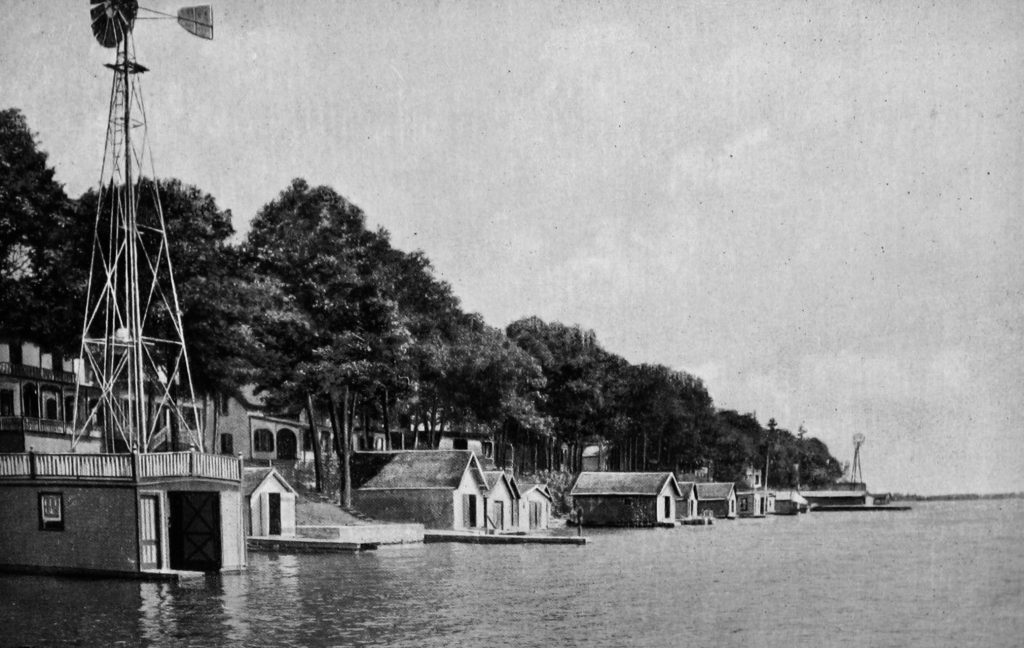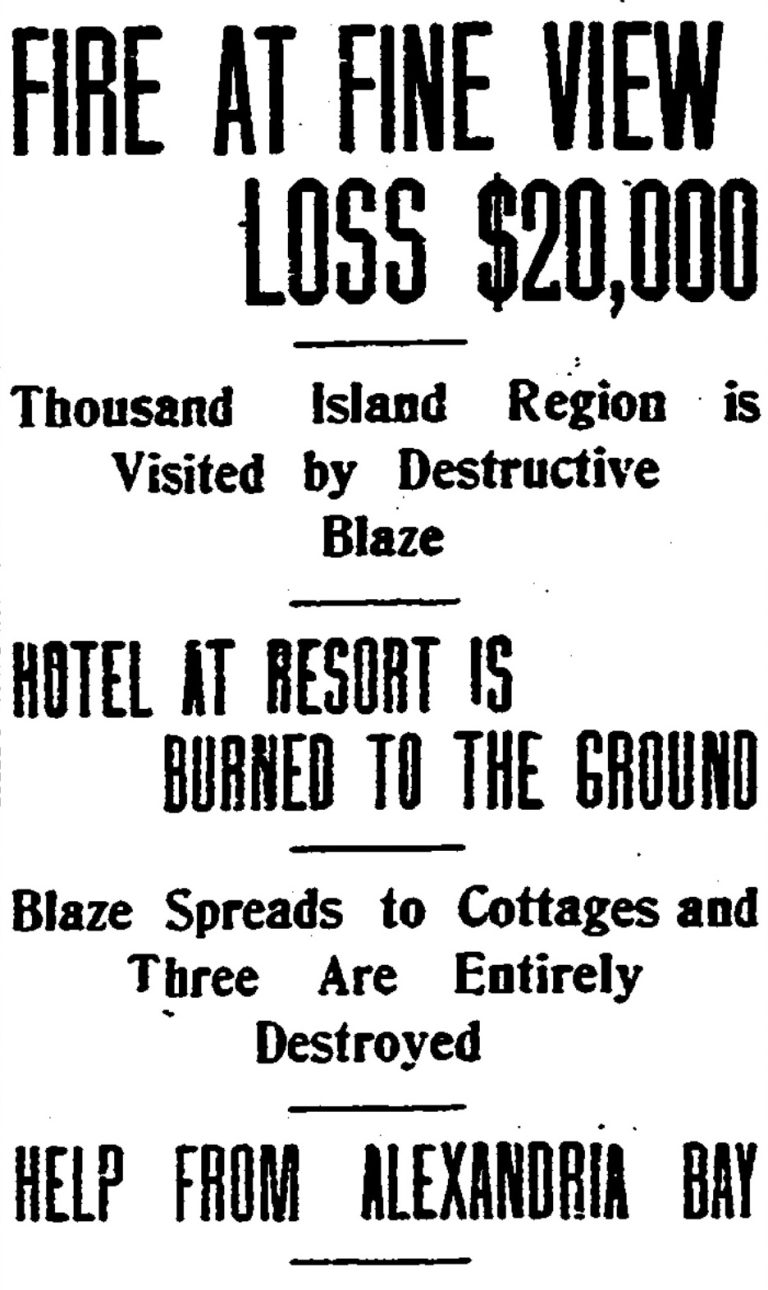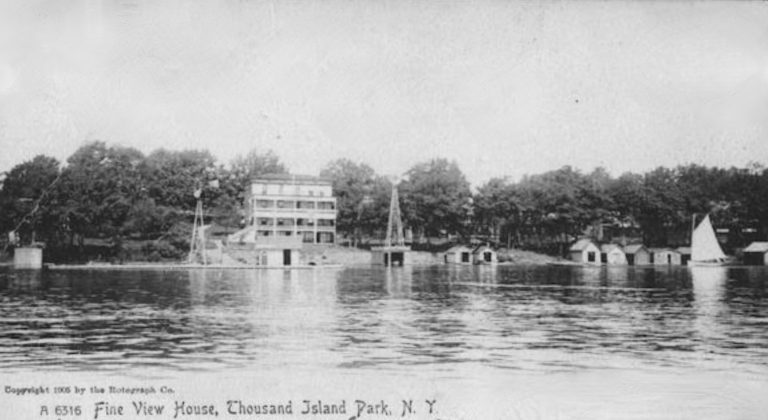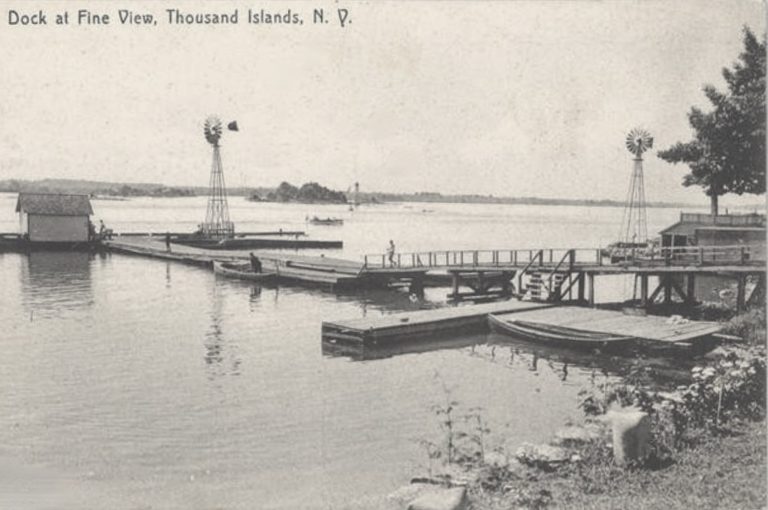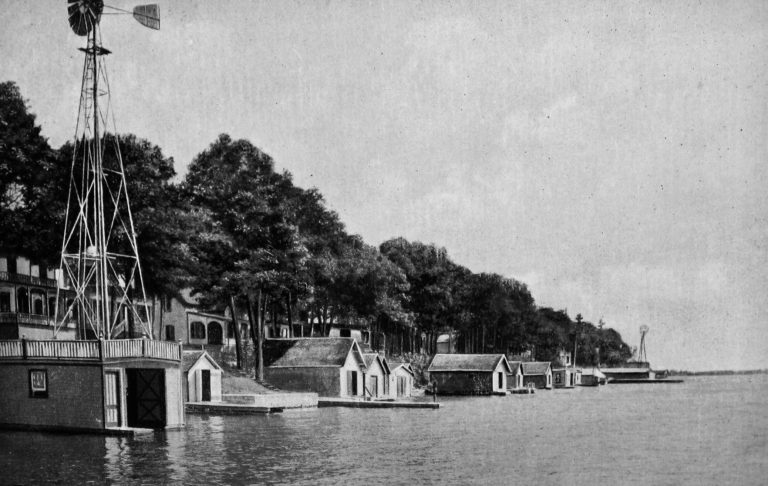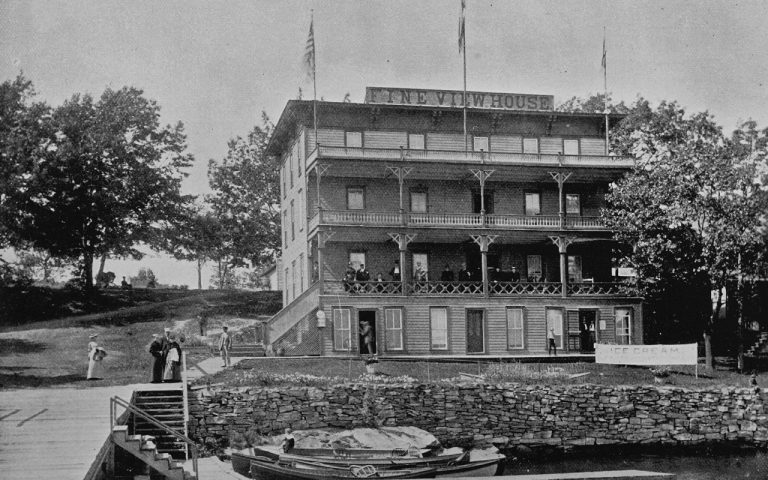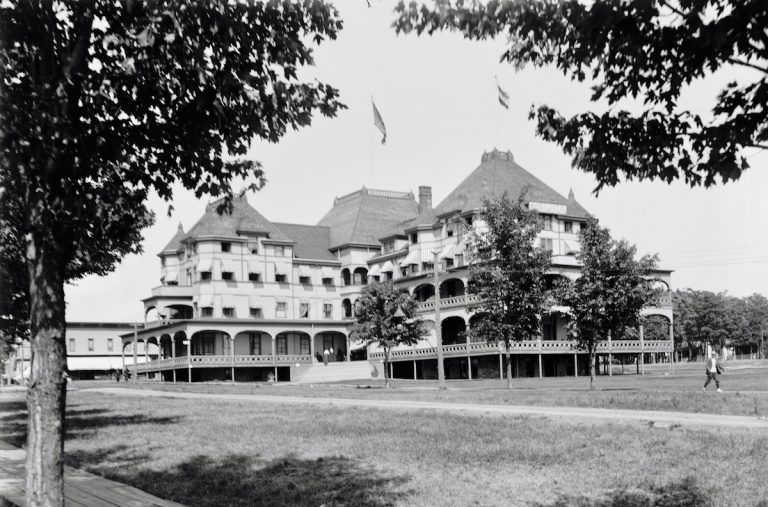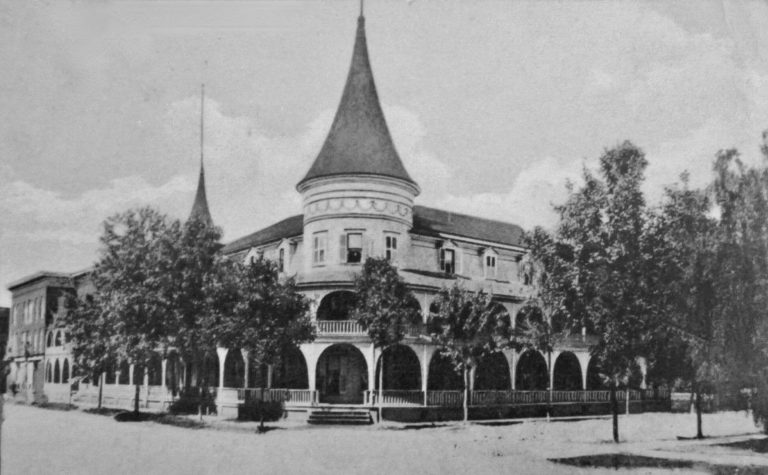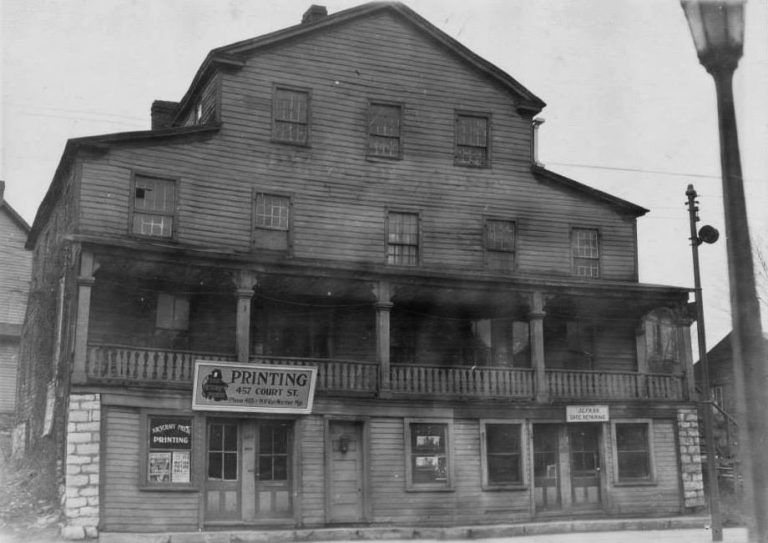Built Originally As Wellesley House, Fine View House Was Lost In 1914 Blaze
Completed in 1880-81 by Stubbs & Woodard of Carthage, N.Y., the Fine View House was originally known as the Wellesley House and leased for operation by F. D. Howell, who had recently managed the Globe Hotel, later renamed the Otis House in Watertown, N.Y.
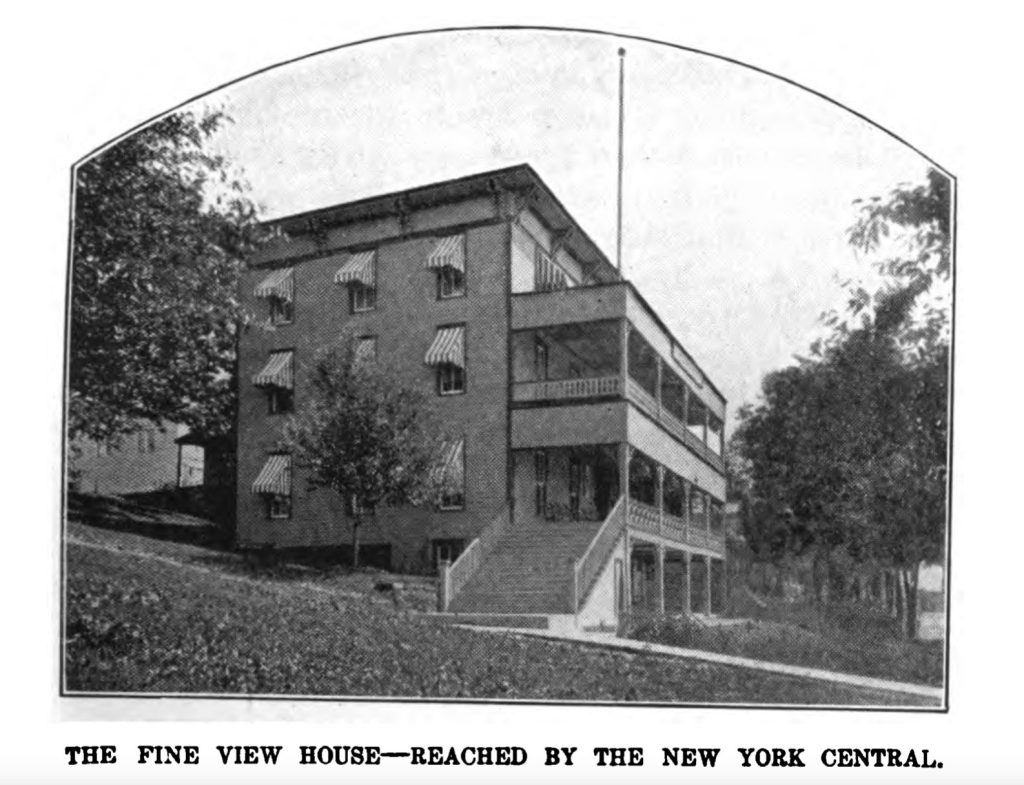
The frame structure was three stories high and sat back a short distance from its dock, and “commanded a splendid view of the Thousand Islands and St. Lawrence River,” according to the Watertown Daily Times. An article dated June 16, 1881, also described it as being approximately a half-mile down from Thousand Island Park “with a land avenue a mile in length connecting the beautiful grounds of that association.”
F. D. Howell ran the Wellesley House for a few seasons before W. M. Beull, better known as “Billy Beull,” a well-known hotel man himself, ran it for a few years while Howell went on to manage the St. Lawrence Hotel in Alexandria Bay. In July 1887, the Watertown Daily Times reported the properties name change and new proprietors–
The Fine View House, which has heretofore been known as the Wellesley House, has been repainted on inside and outside, and newly furnished with furniture and silverware. It is a temperance house this year and is run by Woodward & Green of Carthage.
The house has very flattering prospects, having had about fifty guests ever since the season opened. A farm is run in connection with the hotel which supplies it with vegetables, etc. A series of dances will be arranged for the season.
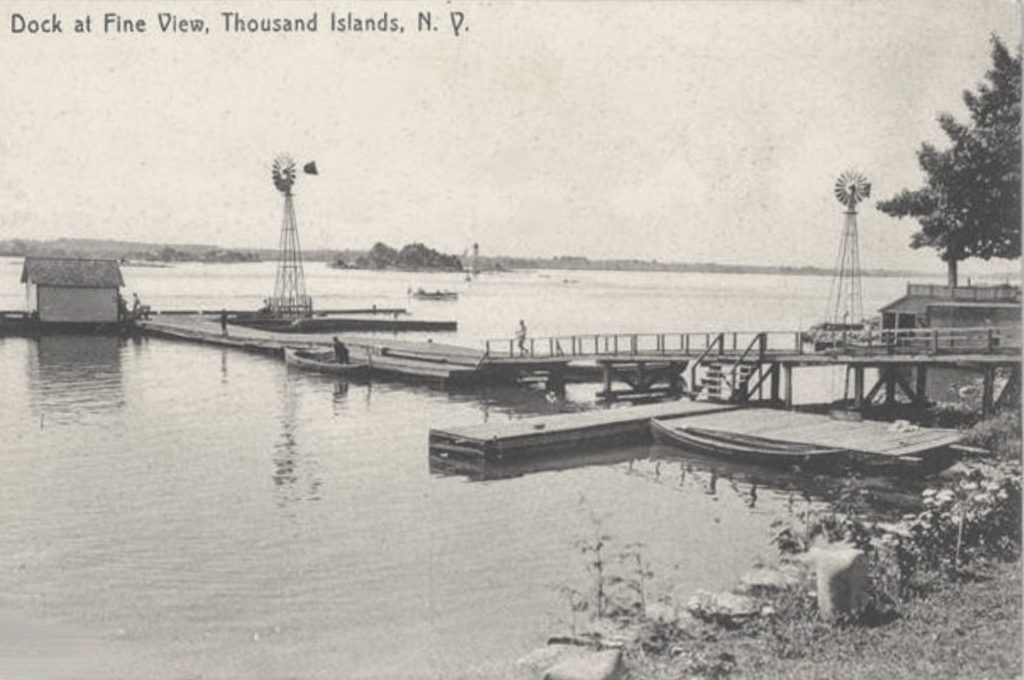
It is unknown how long it remained involved with the temperance movement, something of a fad at the time when no alcohol was served. However, at the time, it was reported business was booming due to T. I. Park’s admission fees which also helped business at the nearby Pullman House.
Sometime around 1889, the 3-masted schooner “Vickery” struck a shoal near the lighthouse opposite Fine View House and sunk with 21,000 bushels of corn on board. Two of its spars were high above the water and contributed to another serious accident on August 22 when the steam yacht “Sport” tried to navigate between two of its spars. The Sport’s smokestack was torn off when it hit a cable, and the wheelhouse was wrecked while the starboard-side railings were carried away.
The Vickery’s sinking allegedly was caused when the captain, though having traveled the American Channel scores of times, was afraid he might be deceived by the Clayton lights and hired a pilot there named Webber, who crashed the boat not even ten minutes into its journey. It was said in an article dated August 27, 1889, in The Times that as soon as the boat ran into the shoal, the captain hurried down to the cabin, retrieved a gun, and intended to shoot Webber but had the gun knocked from his hand and into the river at the last second.

Only a few months later, in January of 1890, the area suffered a violent wind storm that caused a considerable amount of damage. The storm was so violent it was reported that many feared it was a cyclone. As reported in The Times on the 15th–
The water raised about three feet, doing a great amount of damage to boat-houses along the shore. About one-half of the thirty boat-houses (in what is known as the long string) were very badly damaged by the seas.
The boat-houses, skiff and skiff dock at the Fine View House, owned by O. F. Green, were carried away. The skiff was secured after considerable damage had been done to it.
The dock was repaired by early April and a new promenade was constructed leading to it.
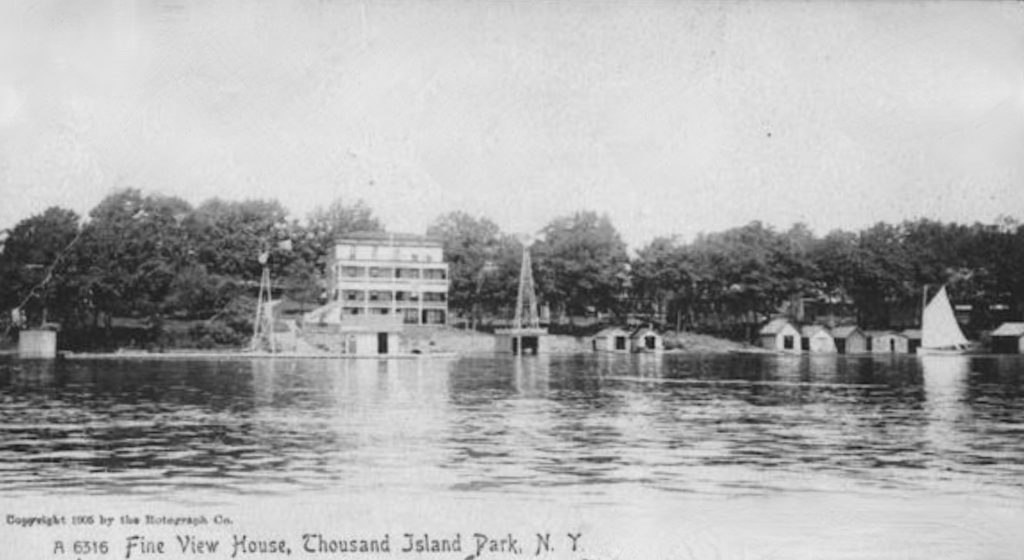
On April 30, 1914, the Fine View House became the fourth major fire in the past few years in the Thousand Islands, following the likes of the Frontenac fire on Round Island and the Columbia fire at Thousand Island Park. As with most wooden frame structures of the era, it went up in flames fairly quickly, while Fine View lacked any fire protection with no fire hydrants on the island with the exception of T. I. Park.
The Times reported of the fire–
Fine View, April 30 – The Fine View hotel, one of the oldest and best known summer inns on the Thousand Islands, was burned to the ground in a fire that swept the southern portion of the island at 11 this morning. Besides the hotel, four cottages were burned. The total loss is $20,000. The hotel was valued at $10,000 and was insured for $6,000. The four cottages had an aggregate value of about $10,000 and were partly insured. The hotel was owned by C. C. Pierce of Clayton.
The fire started in the second floor of the Fine View hotel about 11 this morning after a fire had been kindled in the stove in the kitchen on the first floor. C. C. Pierce, the proprietor, arrived at Thousand Island Park on the Island Wanderer at 9:30 and came directly to his hotel.
He started a fire in the stove, and people here think that an overheated chimney caused the partitions to catch fire on the second floor in the help’s dormitory.
Mr. Pierce, unaware of a fire at the time, remained in the building until Henry Gould, the first to discover the smoke coming from the roof while at the store across from the hotel, came to notify him. From there, the men went up to the second floor, at which time the rear part of the building was “wrapped in flames.”
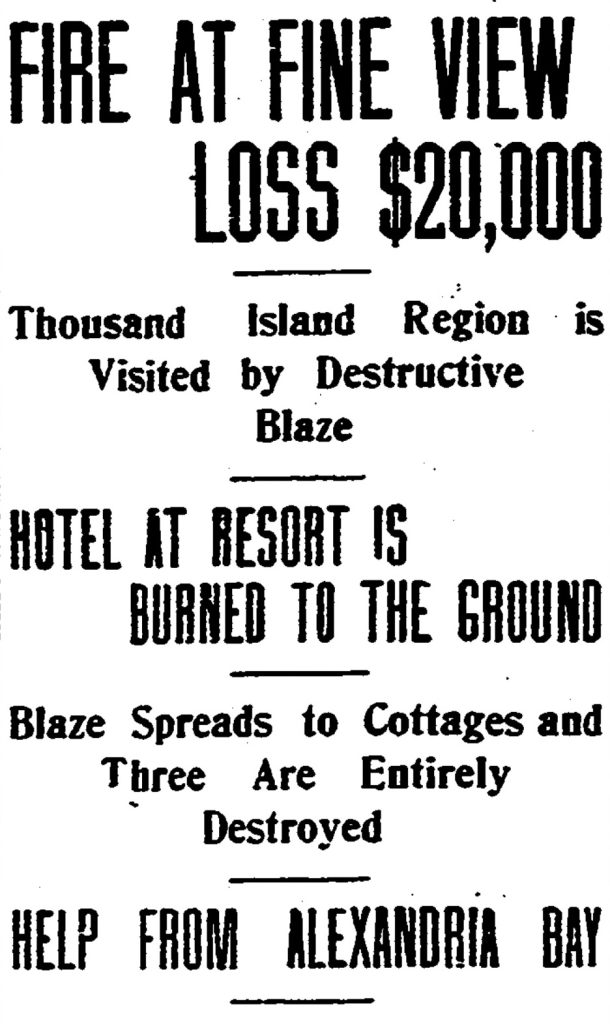
The Fine View church bell rang the designated general alarm and was heard by people in T. I. Park. Several minutes later, firefighters with a chemical engine and several residents arrived, but it was said that, within fifteen minutes, the entire rear was “a roaring furnace.”
The Fineview House’s demise coincided with the end of the Golden Era for the area. At the time, the village of Fine View, now Fineview, had a population between 50 and 75 people during the winter. During the summer, with the cottages and hotel filled, the population swelled upwards of 250.
